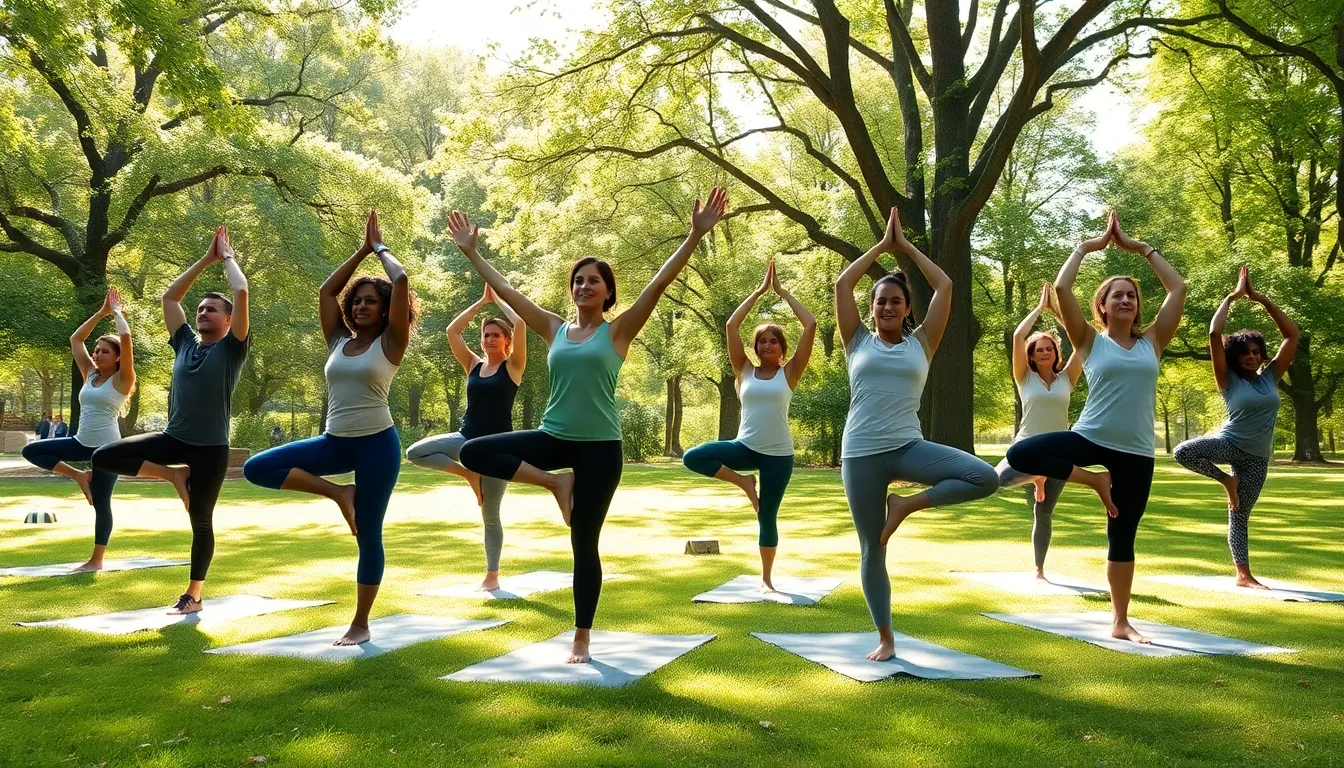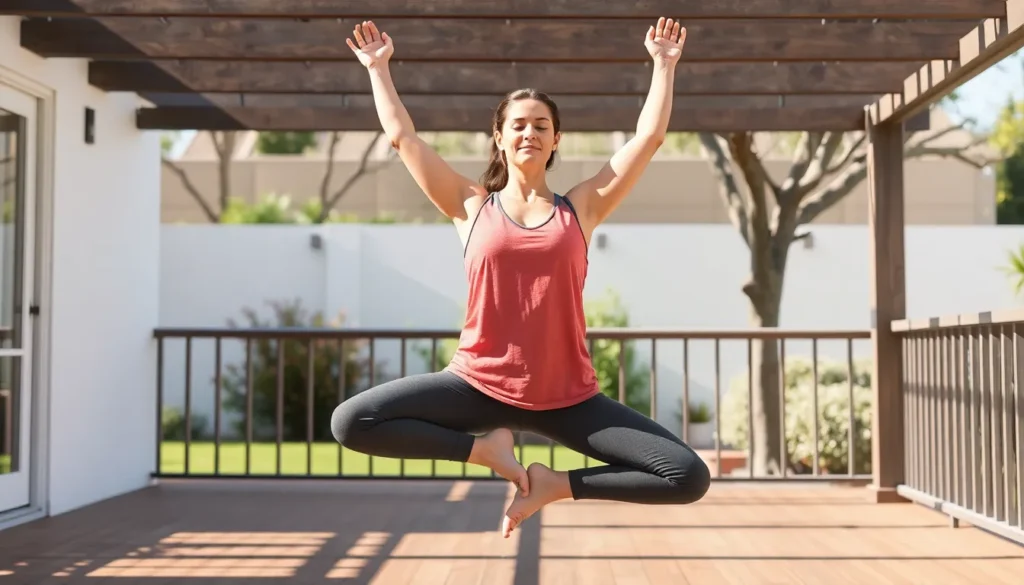In a world that constantly pulls in every direction, mastering balance strategies could be the secret ingredient to thriving amidst chaos. Whether it’s juggling work, family, or that ever-growing to-do list, finding equilibrium can feel like a circus act gone wrong. But fear not! With the right strategies, anyone can transform from a tightrope walker teetering on the edge to a confident performer strutting across the stage.
Table of Contents
ToggleOverview of Balance Strategies
Balance strategies help individuals navigate the complexities of daily life. Techniques such as time management and prioritization provide frameworks for organizing tasks efficiently. Focusing on clear goals creates a path for achieving both personal and professional aspirations. Incorporating self-care routines enhances overall well-being, enabling better stress management.
Mindfulness practices, like meditation and deep breathing, foster a calm mindset, improving focus. Embracing flexibility allows for adjustments when unexpected challenges arise. Delegating responsibilities can lighten the load, promoting teamwork and collaboration. Utilizing tools like planners or digital apps aids in tracking progress and maintaining accountability.
Scheduling breaks throughout the day prevents burnout, encouraging sustained energy and productivity. Evaluating commitments periodically ensures that obligations align with priorities and values. Cultivating supportive relationships provides a network for sharing burdens and celebrating achievements.
Establishing boundaries is crucial for maintaining focus and preventing distractions. Implementing these strategies consistently fosters a sense of balance, making life’s demands more manageable. By developing these methods, individuals transition from chaos to a structured approach, leading to enhanced satisfaction in multiple areas of life.
Types of Balance Strategies

Balance strategies come in two principal forms: static and dynamic. Both types offer effective methods for achieving equilibrium in life.
Static Balance Strategies
Static balance strategies emphasize stability. These techniques focus on maintaining consistency across various life domains. Prioritizing time management and set routines creates a solid framework for daily tasks. Clearly defined goals facilitate a sense of direction, enabling individuals to allocate time effectively. Incorporating self-care routines enhances well-being and can reduce stress. Establishing boundaries serves to protect personal time, ensuring that distractions are minimized. Regularly evaluating commitments allows one to align responsibilities with personal values and priorities. Utilizing tools like planners or digital apps helps track progress. By adhering to these strategies, individuals foster a reliable support system that stabilizes their daily lives.
Dynamic Balance Strategies
Dynamic balance strategies prioritize adaptability. These techniques address the need to adjust to changing circumstances. Embracing flexibility in plans helps individuals respond to unexpected challenges without feeling overwhelmed. Mindfulness practices, such as meditation, support the development of a calm mindset, improving focus. Incorporating scheduled breaks throughout the day prevents burnout and promotes productivity. Delegating responsibilities fosters teamwork and collaboration, allowing for distribution of tasks. Evaluating one’s commitments periodically ensures alignment with evolving priorities. Cultivating supportive relationships creates a network for sharing challenges and celebrating achievements. By actively employing these strategies, individuals enhance their resilience, making it easier to navigate life’s complexities.
Importance of Balance Strategies
Mastering balance strategies offers essential benefits for achieving well-rounded living. Individuals experience significant improvements in both physical health and mental well-being through effective techniques.
Benefits for Physical Health
Practicing balance strategies enhances physical health by promoting a more active lifestyle. Regular time management allows for the inclusion of exercise, ensuring individuals allocate time for physical activity. Prioritizing self-care routines, such as nutritious meal planning, plays a key role in maintaining overall health. Scheduling consistent sleep patterns contributes positively to energy levels and recovery. Engaging in outdoor activities not only provides exercise but also exposes individuals to sunlight, improving vitamin D levels. Each of these practices leads to better physical condition and boosts immune function.
Benefits for Mental Well-Being
The positive impact of balance strategies on mental well-being cannot be underestimated. Utilizing mindfulness techniques decreases daily stress and enhances focus. Integrating meditation or deep breathing routines fosters a sense of calm, which is crucial in a hectic environment. Furthermore, establishing supportive relationships acts as a buffer against emotional challenges. Regularly setting and reflecting on personal goals helps maintain motivation and a clear sense of purpose. Overall, these strategies collectively contribute to resilience and emotional stability.
Implementing Balance Strategies
Implementing balance strategies transforms daily life management. By applying effective techniques, individuals can achieve greater equilibrium.
Practical Applications in Daily Life
Daily life offers numerous opportunities to implement balance strategies. Scheduling specific times for work, family, and personal activities enhances organization. Prioritizing tasks based on their urgency ensures essential responsibilities receive the necessary attention. Utilizing planners or digital tools aids in tracking commitments and deadlines. Incorporating short breaks throughout the day increases productivity while maintaining focus. Engaging in regular self-care activities fosters a healthier mindset and supports overall well-being. By intentionally creating a structured routine, individuals can experience reduced stress and improved life satisfaction.
Balance Exercises and Techniques
Balance exercises and techniques enhance both physical and mental stability. Practicing mindfulness techniques, such as breath awareness or guided meditation, promotes emotional resilience. Engaging in daily physical activities, like yoga or tai chi, strengthens the body while calming the mind. Incorporating time for stretching during breaks alleviates tension and fosters flexibility in daily tasks. Teaming up with supportive friends or family nurtures emotional connections and aids in combating stress. Finally, reflecting on personal goals enables individuals to adapt their strategies, ensuring continued progress and balance in their lives.
Mastering balance strategies is essential for navigating the complexities of modern life. By adopting both static and dynamic approaches individuals can create a personalized framework that supports their unique circumstances. These strategies not only enhance time management and prioritization but also encourage adaptability in the face of change.
Incorporating self-care and mindfulness practices further enriches this journey towards balance. As individuals implement these techniques they’ll likely notice improvements in both physical health and mental well-being. With consistent effort and the right mindset achieving a harmonious life becomes an attainable goal. Embracing balance strategies empowers individuals to thrive amidst life’s demands fostering satisfaction and resilience.

